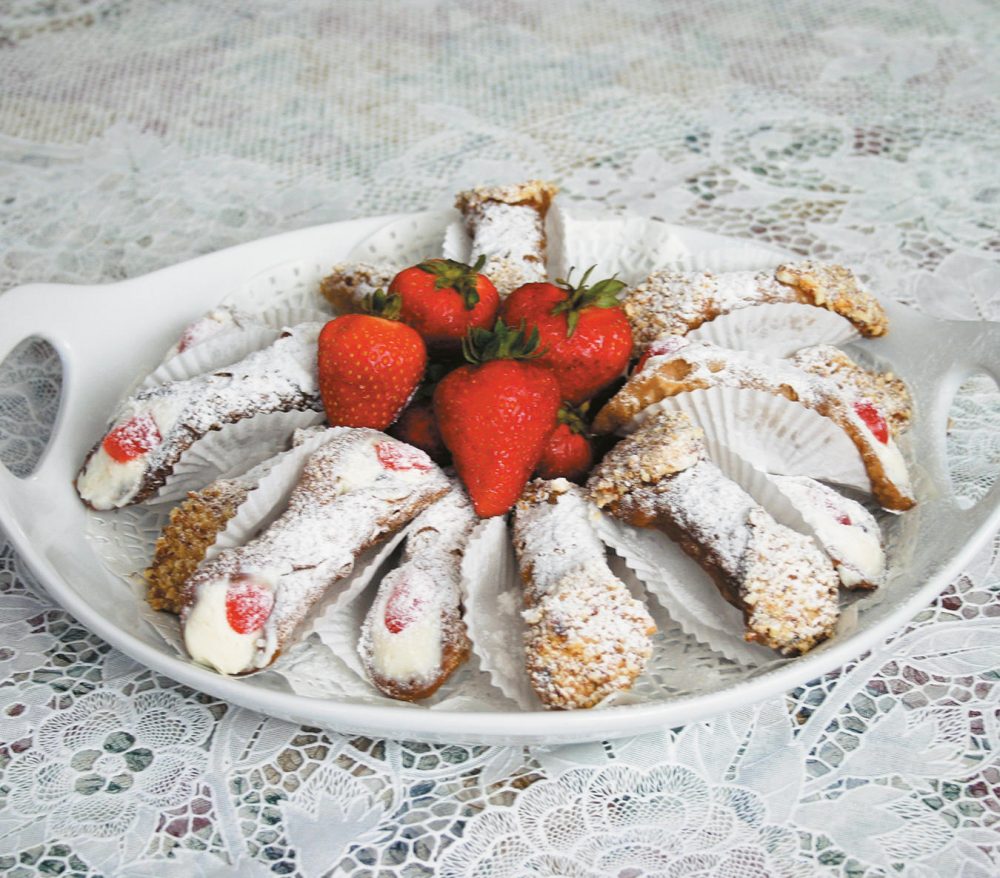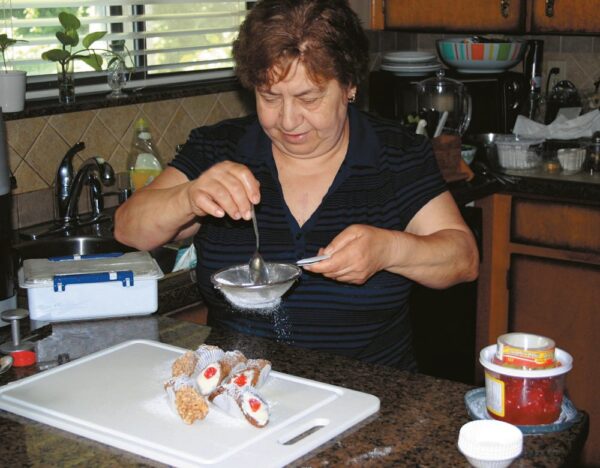A light sprinkling of flour settles on the countertop before Giovanni DiSalvo gently stretches out a ball of dough with the heel of his hand. He passes it through a pasta roller and flours it again, repeating the process until the dough reaches the desired thickness. Singing softly in Italian, he cuts rounds out of the metre-long ribbon and rolls them out once more before passing them to his mother-in-law. Giovanni turns back to the kitchen and cradles the next ball of dough in his hands—still joyful, still singing.
With an ever-present twinkle in her eye, Enza Martorana is the quintessential Italian nonna, the mamma behind Mamma Cannoli. She wraps the dough around the cannoli forms one by one, wetting her fingertips to make the seal. As she gently lowers each cylinder into a shallow pan, the dough bubbles once it hits the hot oil, releasing a sweet perfume while it cooks. Using a pair of tongs, Enza delicately flips the shells to ensure they brown evenly, then instinctively removes them from the pan at the perfect crispness. She slides them off the cannoli forms when they’ve cooled, piling them on platters in a golden honeycomb stack.
Using these time-honoured techniques, Enza and Giovanni make nearly 1,000 cannoli shells each week. They fill the pastries with a luscious ricotta cheese mixture and adorn them with roasted almonds, pistachios, chocolate or candied cherries on the day of delivery, ensuring absolute freshness. Together, mother and son-in-law mirror a process passed down through the generations of her family in creating an Italian dolce that traces its origins to the island of Sicily, Enza’s own birthplace.
The method she uses to prepare this traditional Sicilian dessert is over 300 years old, part a sheaf of handwritten recipes from the old country. Enza’s daughter Anna proudly explains, “My mom was a big influence in our lives. When she moved to Canada 35 years ago, she brought all the family recipes with her and made everything at home. She always involved us when she cooked, putting on Italian music while she baked, singing in the kitchen. There were always five different things going on at once—fresh bread, cookies, cannoli, you name it. Every time she travels back to Italy, she always visits different bakeries to update herself with new recipes and new ways of doing things, to ensure that she’s reinventing herself.”
Giovanni (Anna’s husband) continues, “I fell in love with Mamma’s personality and her character. I loved the way she raised the family in the Sicilian traditions.” From the first bite, Giovanni was convinced that people should know about Enza’s cannoli, and he took it upon himself to spread the word. He knocked on restaurant and café doors with plates of samples in hand; sure enough, it didn’t take much persuasion for La Piazza Dario at the Italian Cultural Centre to become the first convert. Bosa Foods soon followed, as did Cioffi’s, Continental Coffee, and Caffe Amici.
Two and a half years later, Enza Martorana’s cannoli are available at a number of locations across the Lower Mainland. Giovanni has designs on expanding distribution for Mamma Cannoli, perhaps even marketing the ricotta cream itself. For now, however, he continues his weekly ritual of cannoli making with Enza in the ebb and flow of their easy kitchen banter, the fruits of their labour shaped by the love of a mother’s hands.










